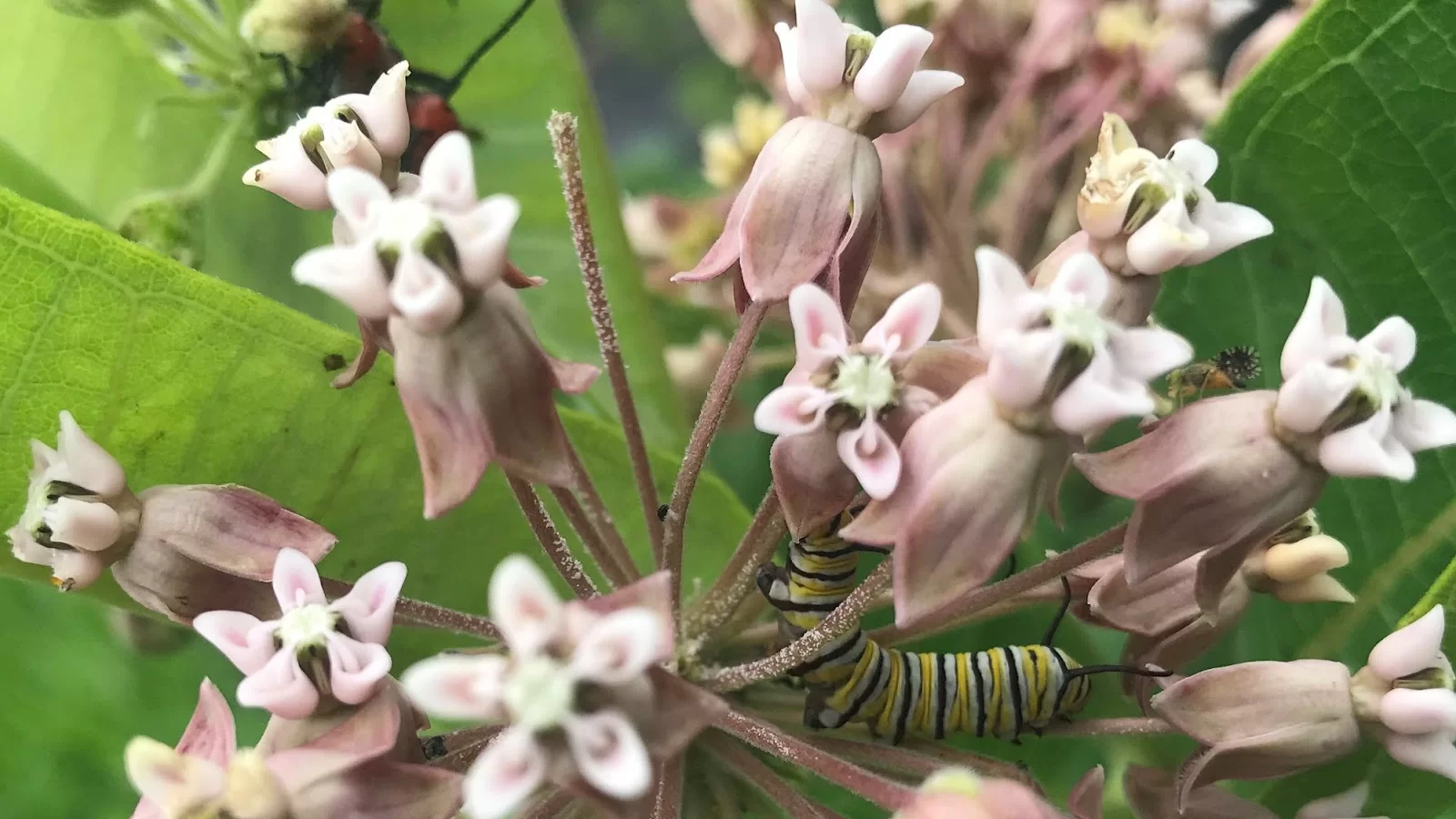Spring peepers sing predawn praises before robins and wrens join the chorus. Red-winged blackbirds trill solos from atop bobbing cattails as a suggestion of sun illuminates the silhouette of a tree line.
While this may induce a bucolic scene to spring to mind, this symphony strikes up each morning a mere stone’s throw from a major urban thoroughfare.
Once the sun announces its presence for the day, the sounds of the natural world are in heavy competition with traffic noise, becoming audible only to those directly immersed in the oasis from where they’re broadcast.
The Dixon Greenway Habitat Enhancement Project is a two-acre pollinator and wildlife habitat enhancement project located on the east side of Madison, Wisconsin.
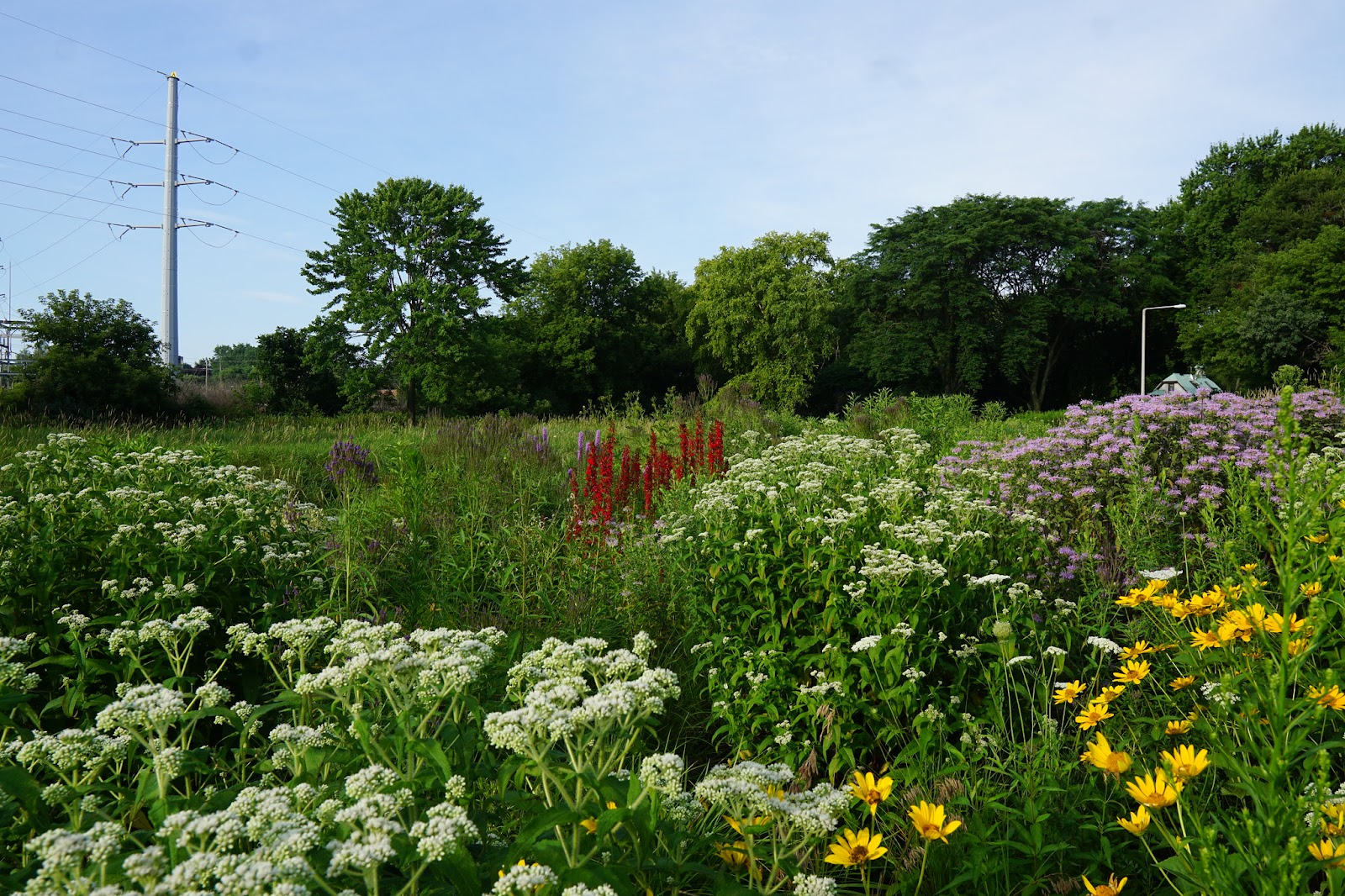
Dixon Greenway in bloom | Photo courtesy of Dixon Greenway Madison
What began as a passion project by two neighbors wanting to save a small enclave of milkweed from the encroachment of invasive plants and the blades of city mowers, has blossomed into a city-supported, community volunteer project that installs 1500 native plants annually.
“It’s not nearly large enough to be an effective habitat restoration project so we try to make it evocative of natural landscapes by distilling and exaggerating aspects of natural plant communities in a way that makes intuitive sense to people walking and biking through it,” said project co-founder, Chris Pekar.
While still a work in progress, the landscape has been largely transformed over the last seven years, from one choked by invasive reed canary grass and thistle, to one alive with pollinators and birds, thriving in a habitat populated with over 100 varieties of native plants.
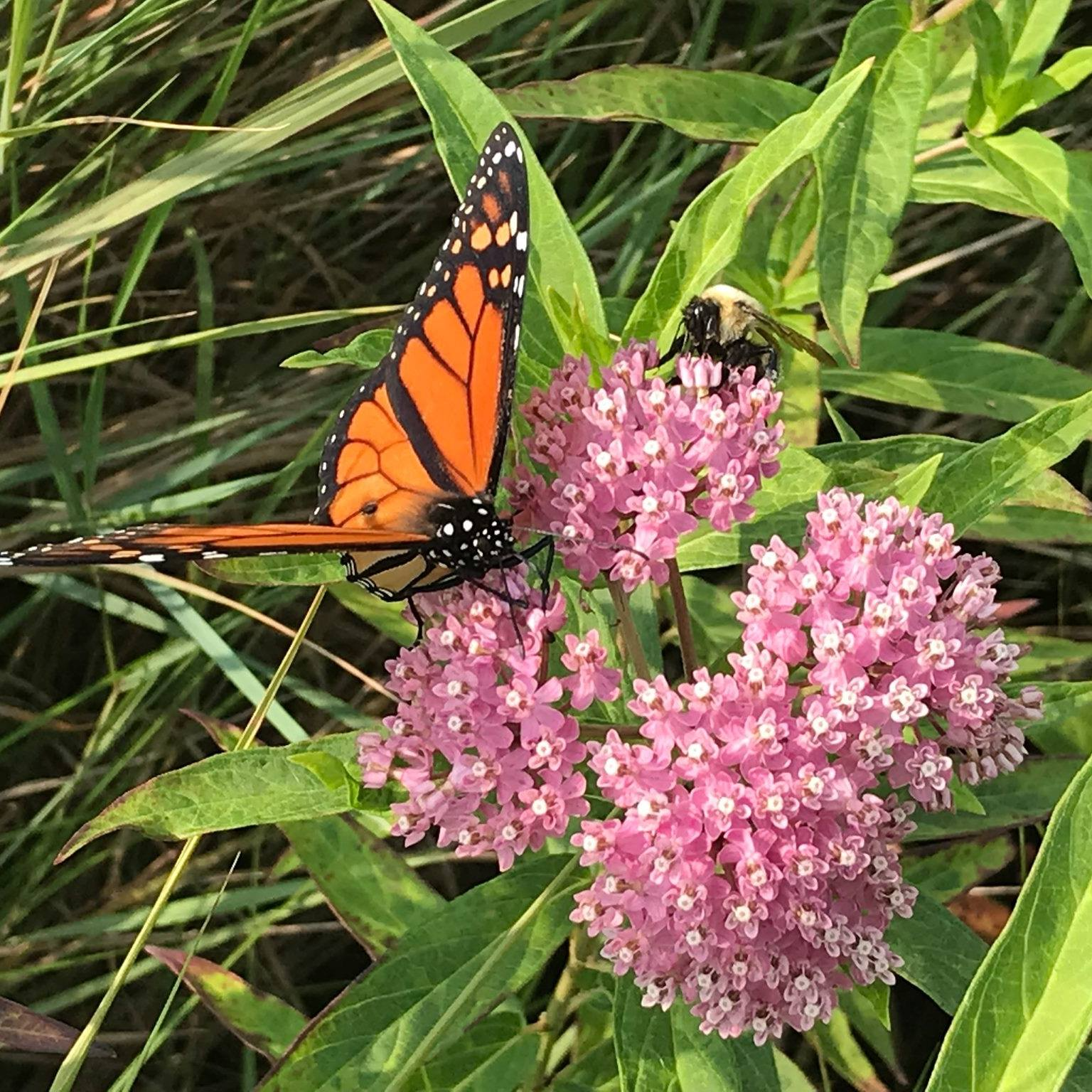
Monarch and bee on milkweed | Photo courtesy of Dixon Greenway Madison
The vision
For years, neighbors and gardeners Steve Drake and Chris Pekar had been occasionally planting native plants in the greenway without the others’ knowledge in hopes of bolstering the patch of common milkweed that was already there and expanding biodiversity.
Over time, the area had gone through significant character changes with the addition of a bike path and a stormwater drainage channel, as well as various mowing schedules. By 2016, the area was left mostly untouched, except for periodic shoulder season mowings to control noxious weeds.
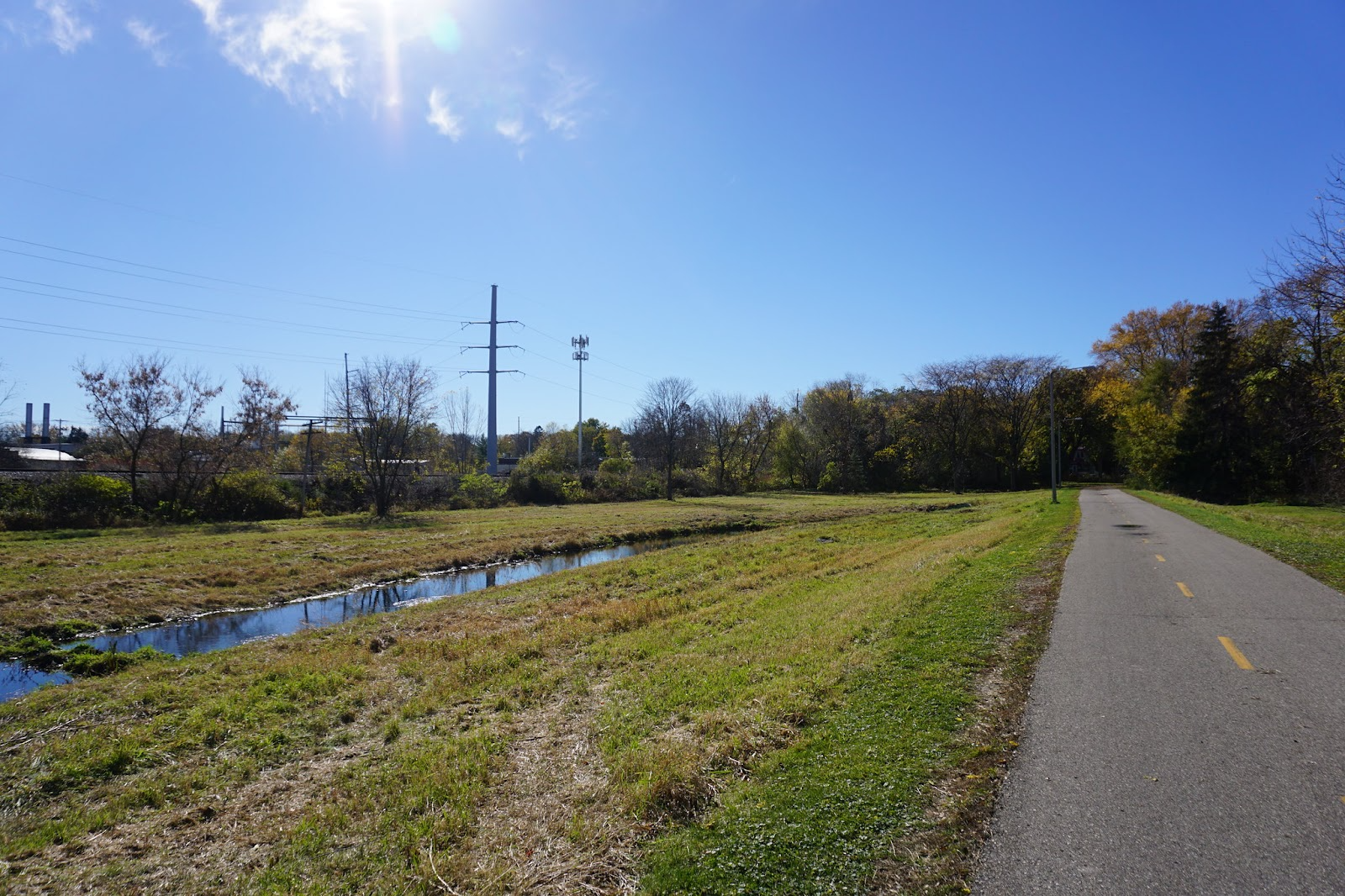
Dixon Greenway site post-mowing, prior to native plantings | Photo courtesy of Dixon Greenway Madison
However, it was during this year that a summer mowing occurred, taking down both the weeds and the milkweed patch during prime pollinator reproduction and pupation season. This was in direct opposition to the recommendations of the city’s Pollinator Protection Task Force—an organization nested under the city’s Engineering Division, designed to guide strategy for the community to become more pollinator friendly.
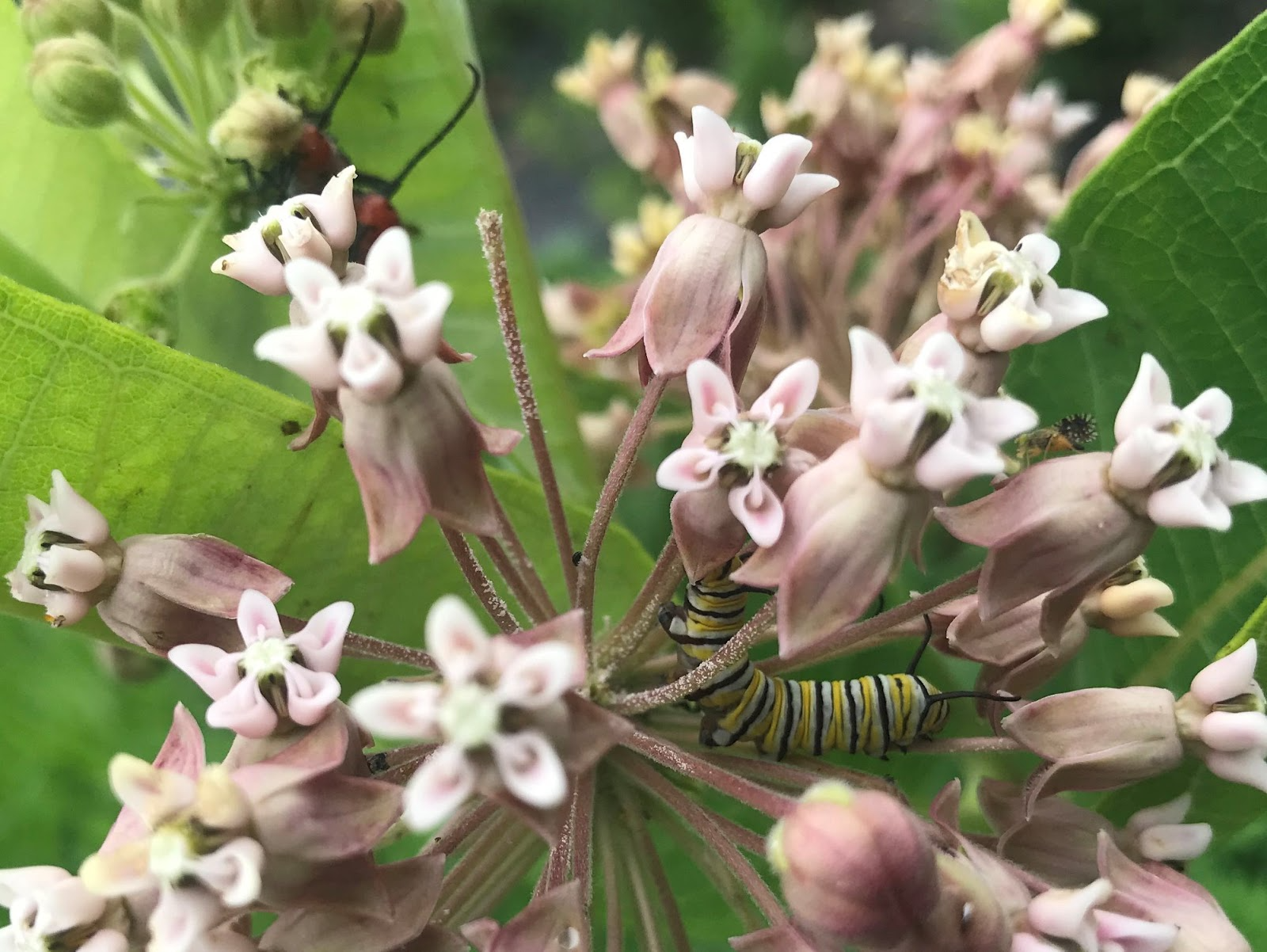
Monarch caterpillar on milkweed | Photo courtesy of Dixon Greenway Madison
After the mowing mishap, Drake and Pekar began to get more serious about a formalized effort to protect the existing milkweed stand and expand pollinator habitat there and created a plan.
In June of 2017, their fledgling plan for the site was approved by city engineering and the two groups have been working together since. “They’ve been really supportive, which is awesome,” Pekar said.
In October of that year, a 40-square-foot section of heavy-duty landscape fabric, that was purchased by the city, was installed for weed suppression on their first plot.
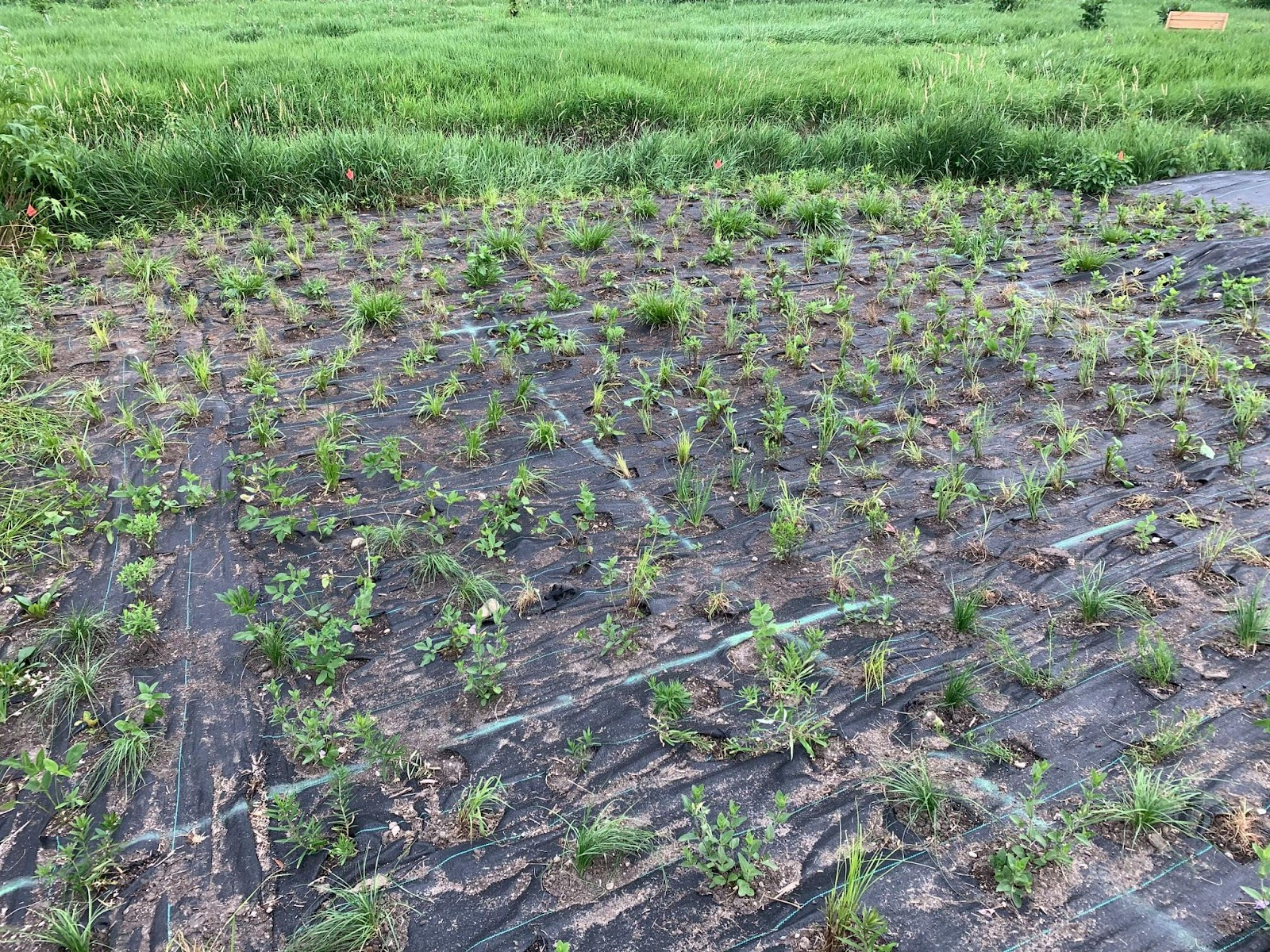
New plantings through landscape fabric | Photo courtesy of Dixon Greenway Madison
Allowing for adequate time to smother weeds and kill the roots, that plot was planted in the summer of 2019 with several hundred native plant plugs, which were donated by neighbors and purchased from a local native plant sale.
The first round of plants grew well, and an additional 400 were planted later that summer and fall. Following the 2020 growing season, the flower seeds were collected, the plants cut back, landscape fabric removed, collected seeds tossed down and covered with the cut plant material for mulch.
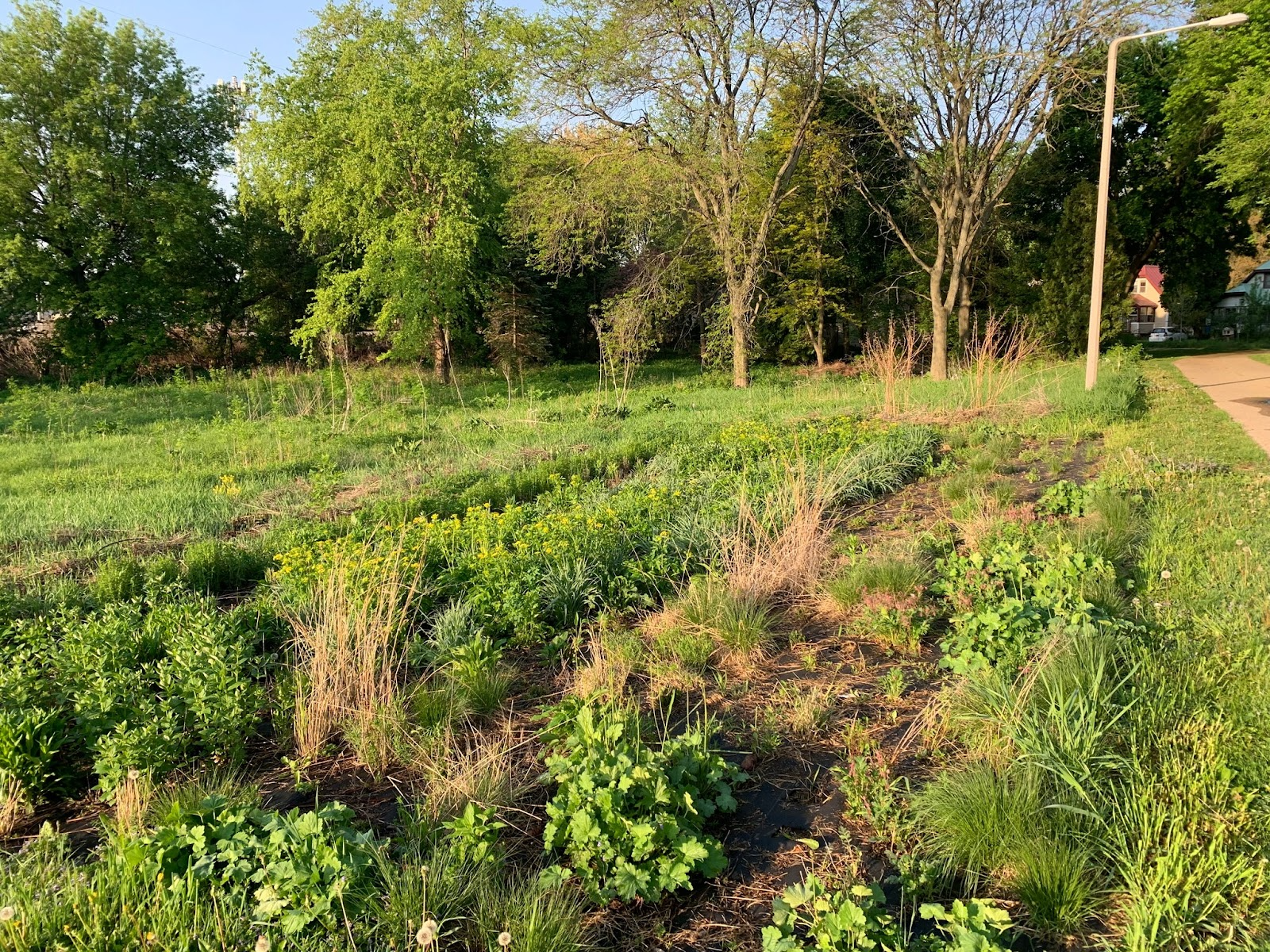
Plantings maturing | Photo courtesy of Dixon Greenway Madison
The project has been expanding its footprint in much the same way since, with ever-increasing efforts from volunteers and neighbors who are passionate about the mission, and who have been enjoying the spoils of a landscape alive with flutter and bloom.
The rewards
When asked what he finds most rewarding about this project Drake says, “Witnessing the progress that we have made during all seasons, but especially during the month of July.” Noting that, “A close second is learning just how many of our neighbors share this passion and show up to share the work.”
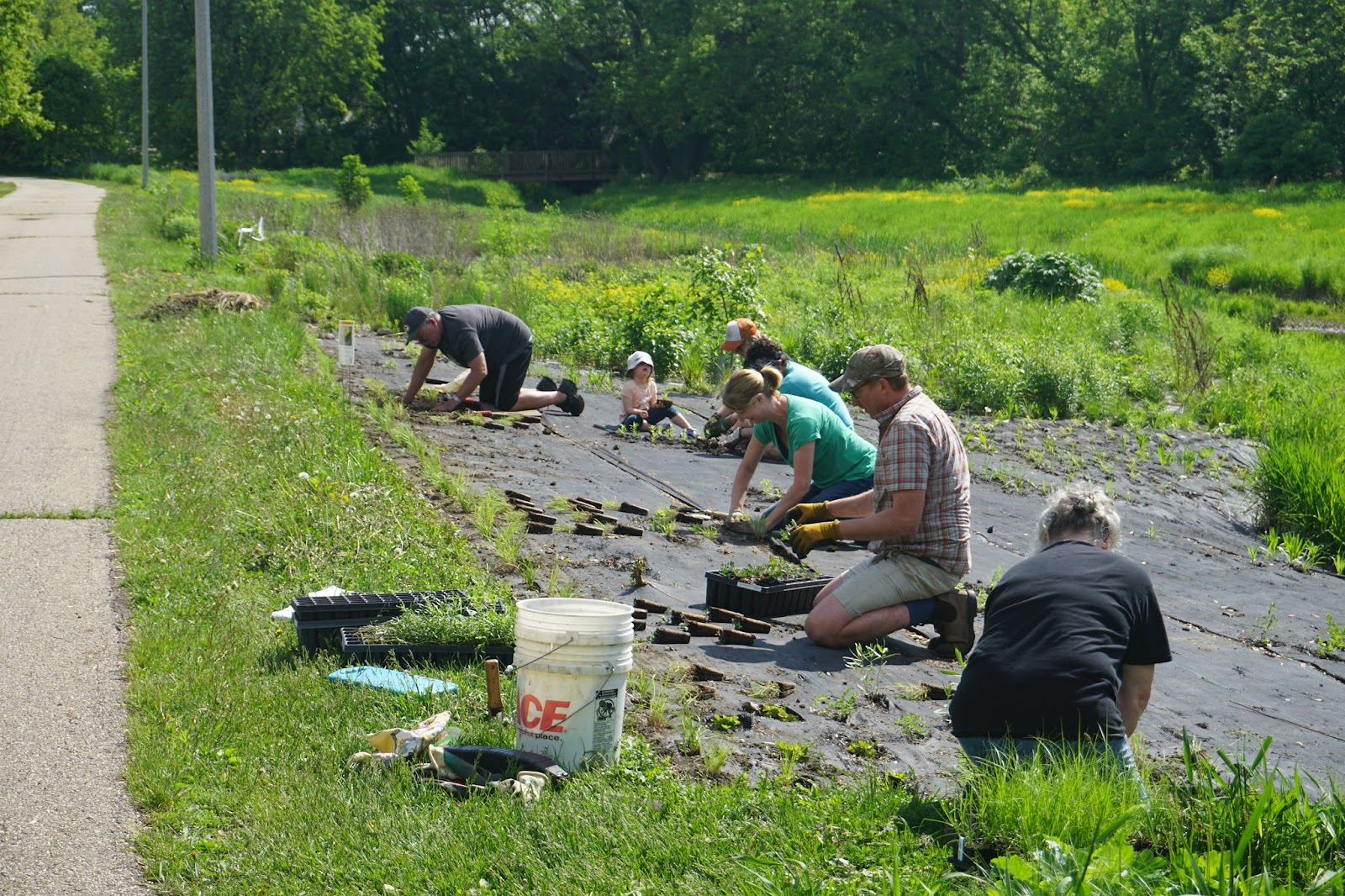
Work party at the greenway | Photo courtesy of Dixon Greenway Madison
Perhaps arguably outshining the community building aspect among neighbors, is the biodiversity, which has been booming since the project began. Of special note, Pekar said, “This year I finally spotted a rusty-patched bumble bee, which is a federally endangered species. That was another one of the goals of the projects, so I was really stoked about that.”
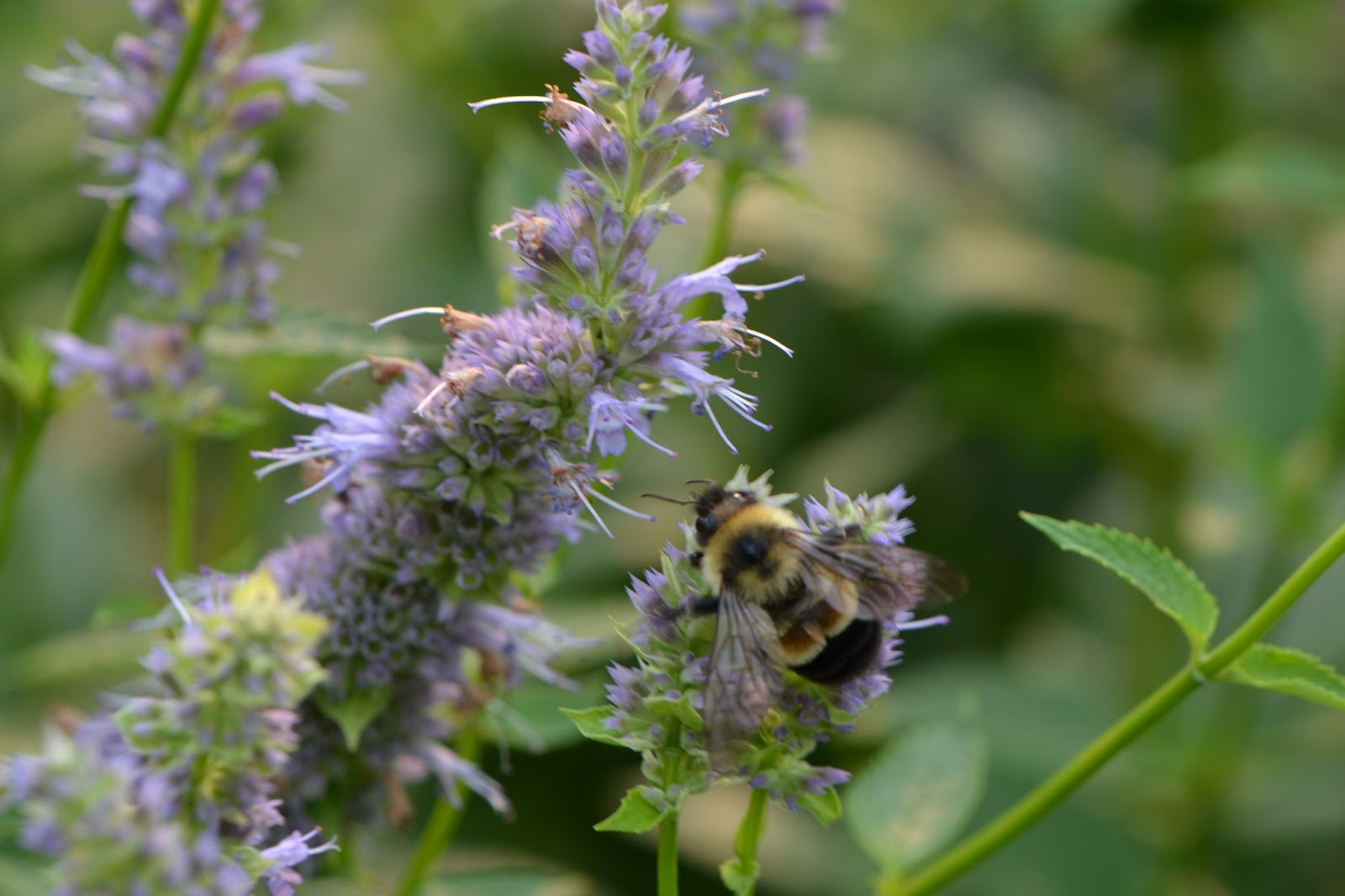
Endangered rusty-patched bumble bee on anise hyssop | Photo courtesy of Dixon Greenway Madison
He also cited that, in addition to the increase in population and diversity of pollinators, “There has also been a big increase in the variety of birds in the area.”
To satisfy curiosity, Pekar has occasionally been using the Merlin app—an audio recording application that aids in bird identification by detecting their calls and songs. During a previous spring, while taking a few short time samples, totaling just 10 minutes, nearly two dozen varieties of birds were detected, including an indigo bunting.
Pekar also noted that, “This spring we had a Virginia rail hanging out for a couple weeks in the cattails that volunteered in the ditch. That was also really cool.”
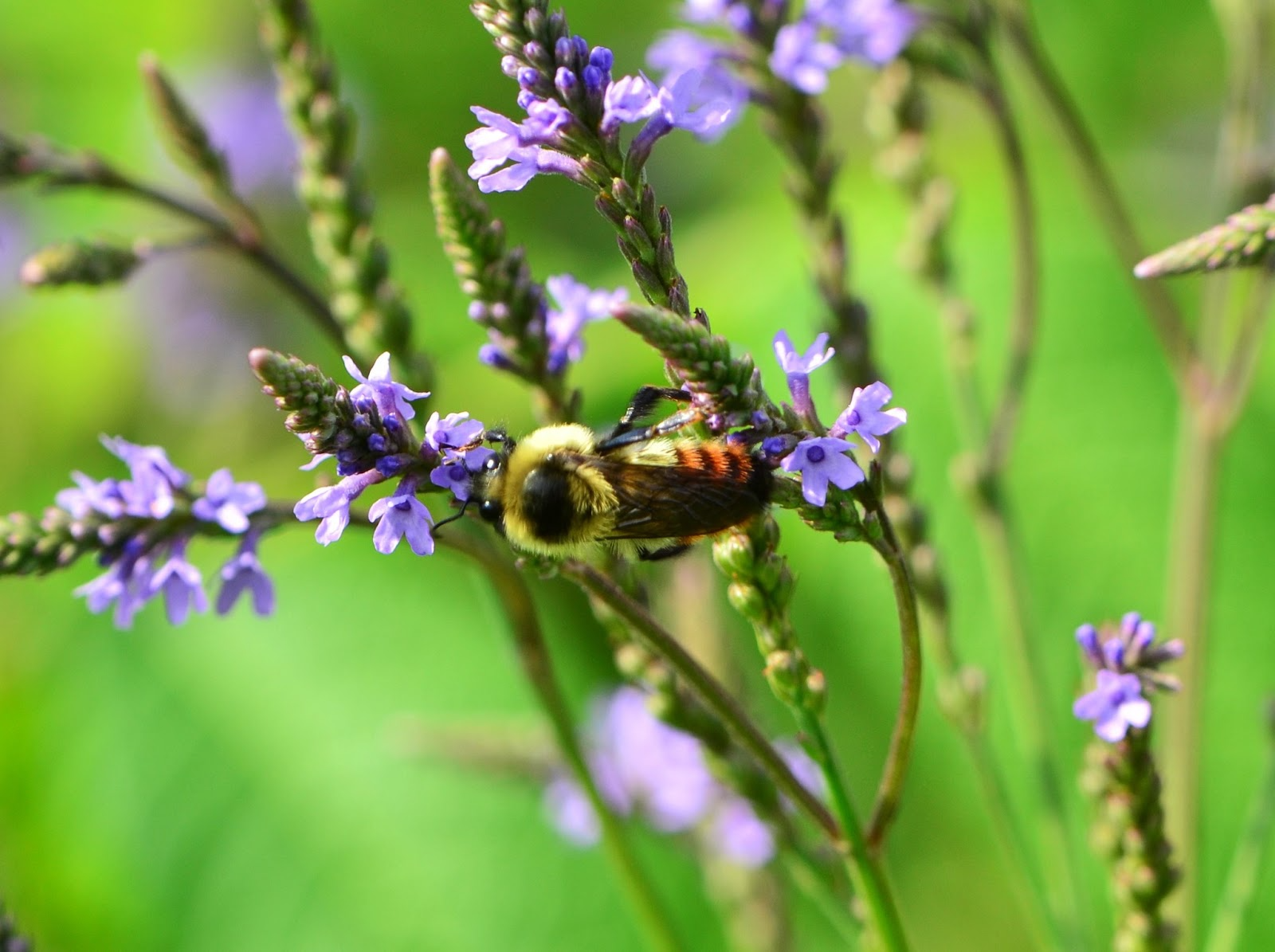
Red belted bumble bee on blue vervain | Photo courtesy of Dixon Greenway Madison
The method
While the project’s expansion efforts have generally followed the same basic methods that were established at its inception, things have become more defined over time and tweaks have been made along the way.
The design has increasingly been one of aesthetics as well as function. In addition to basic plant considerations—like soil moisture, sun exposure, height, habit, texture, bloom period and sociability—plant combinations that highlight, complement, or contrast each other have been more intentionally planned.
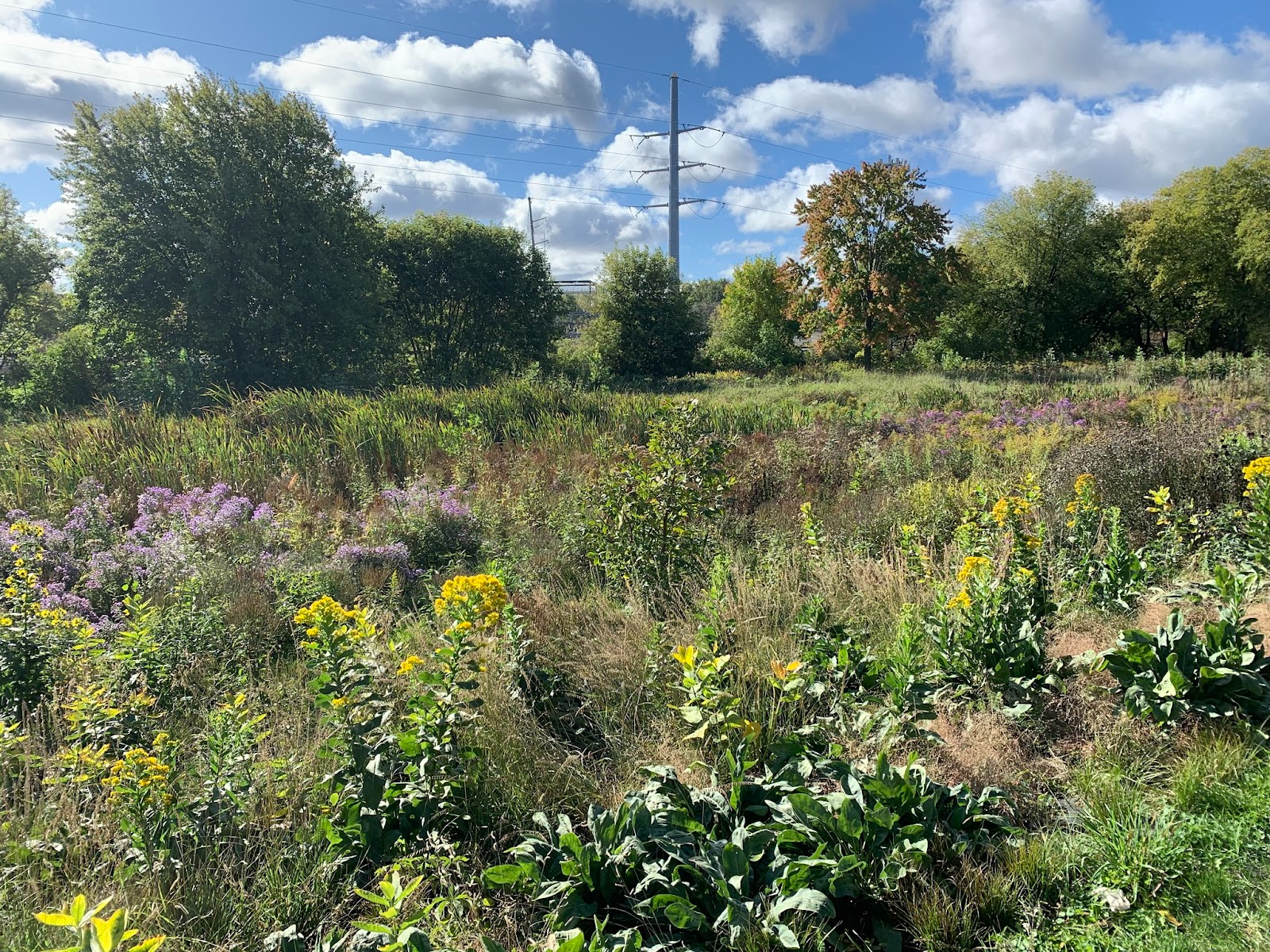
Greenway in bloom | Photo courtesy of Dixon Greenway Madison
Native graminoids (grasses and sedges) have also found a home in the project—both as host and food plants for larval stage insects, and as a hedge against weeds, as the graminoids have a knack for filling in the spaces between flowering plants.
In regard to why native plants are the building blocks of the project Pekar emphasized that, “Native plants are foundational to our native ecosystems and have evolved to live here alongside native wildlife and insect species.”
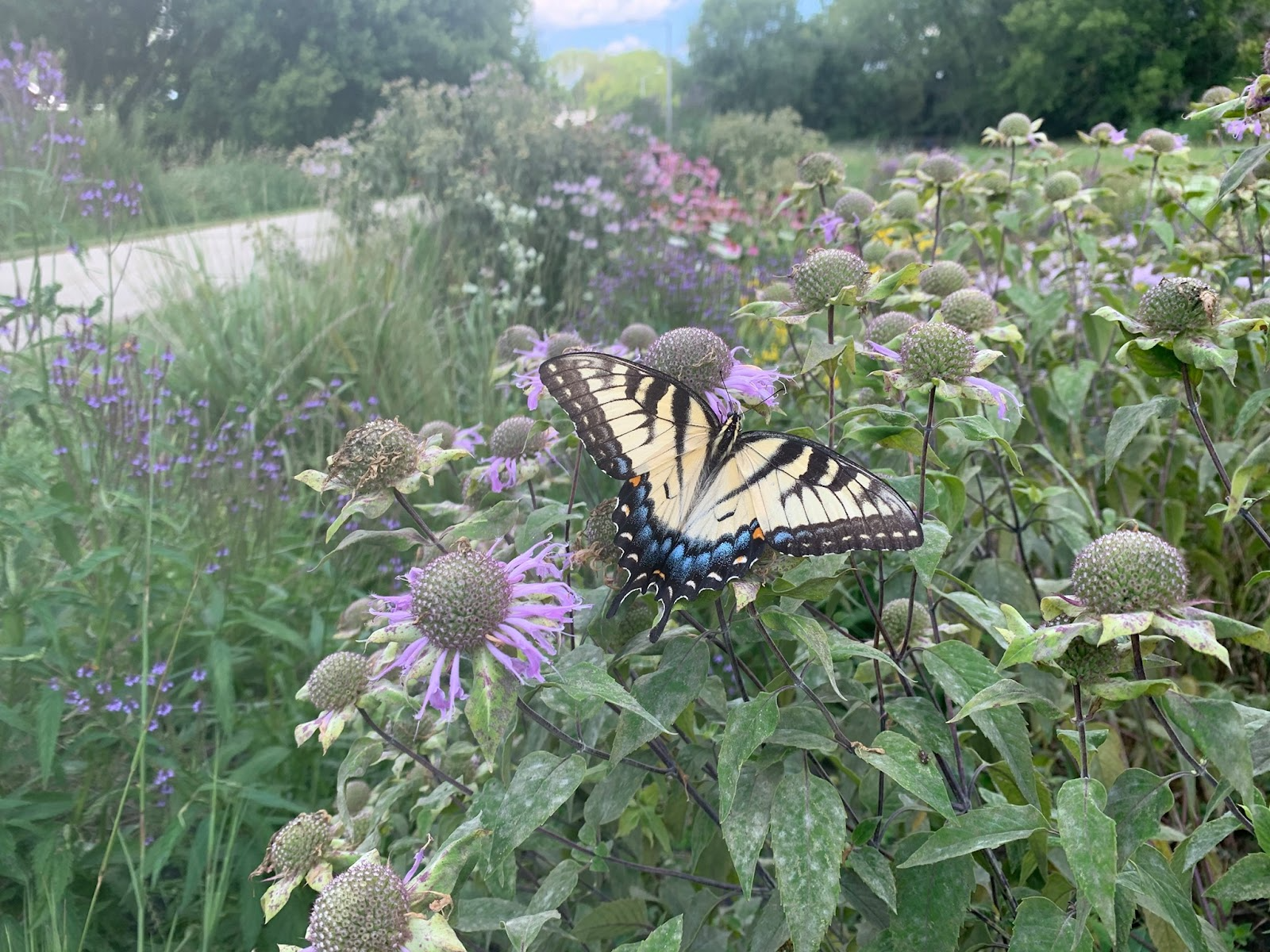
Swallowtail on bee balm | Photo courtesy of Dixon Greenway Madison
“Plants, animals, and insects are each neat on their own but the relationships that exist between these are endlessly fascinating.”
The plants’ evolutionary ability to thrive in the ecosystem has been obvious in how well they have historically acclimated to the site following their first season of being nurtured along with adequate water and weeding.
“As a vegetable gardener, it’s amazing to see how hardy and drought-resistant these native plants are,” Drake said. “Almost like they were made for this climate!”
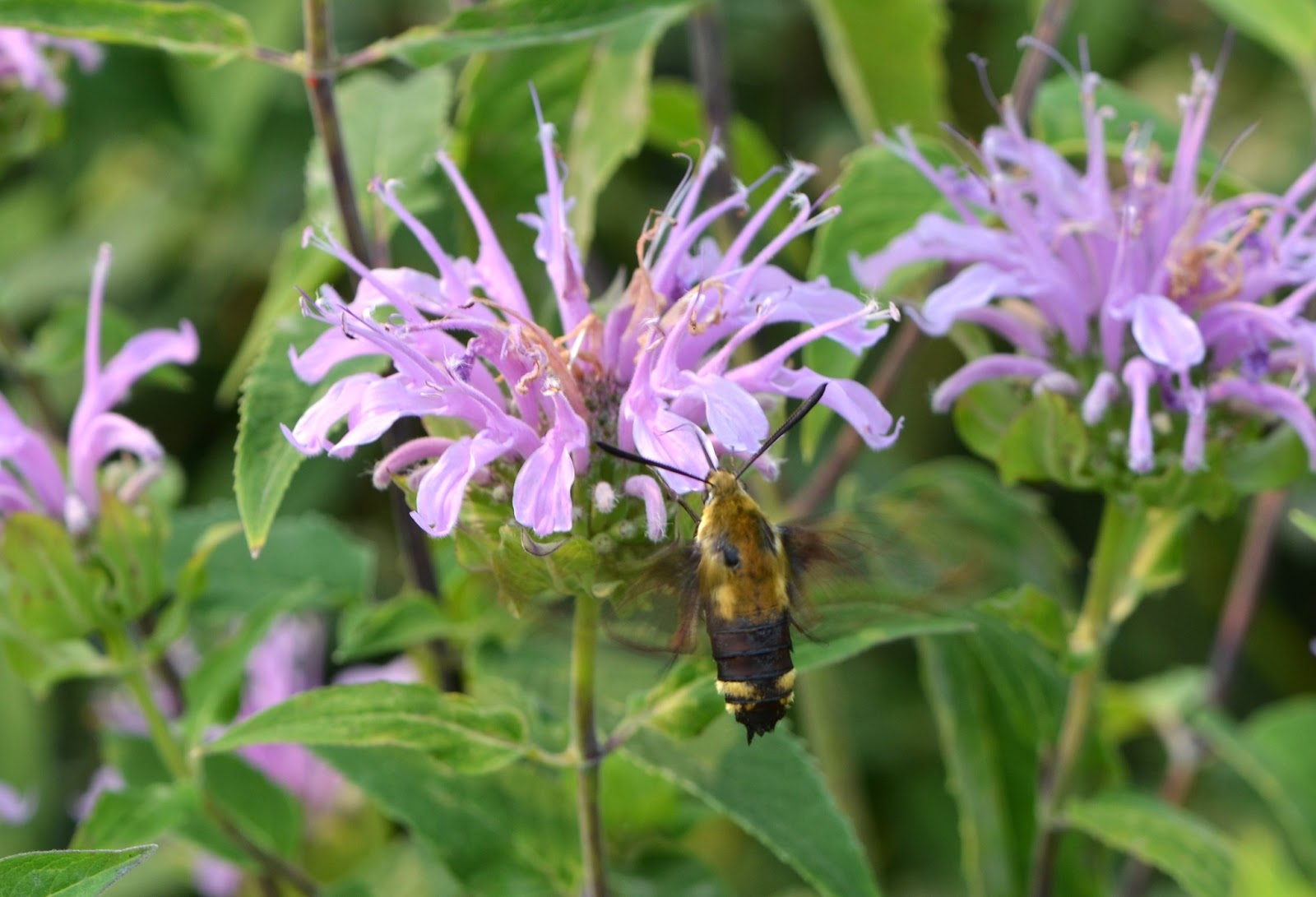
Snowberry clearwing moth on bee balm | Photo courtesy of Dixon Greenway Madison
While project establishment has been helped along by the use of plant starts, as opposed to seeds, seed collection is a tenant of the project. The seeds have typically been thrown as additional seed in an area that’s already been planted with starts however, the founders are branching into more seed-starting initiatives that include more rare plant breeds where starts are unavailable or cost prohibitive.
When starting natives from seed, especially in cold northern climates, it’s essential for the seeds to go through cold stratification—natural exposure to cold—and not be started indoors, as one often would for vegetable garden starts.
These ever-evolving efforts are a testament to their passion for the project—one that is evidenced in the site’s dramatic transformation, and shared by the neighbors and volunteers who show up in increasing numbers every year.
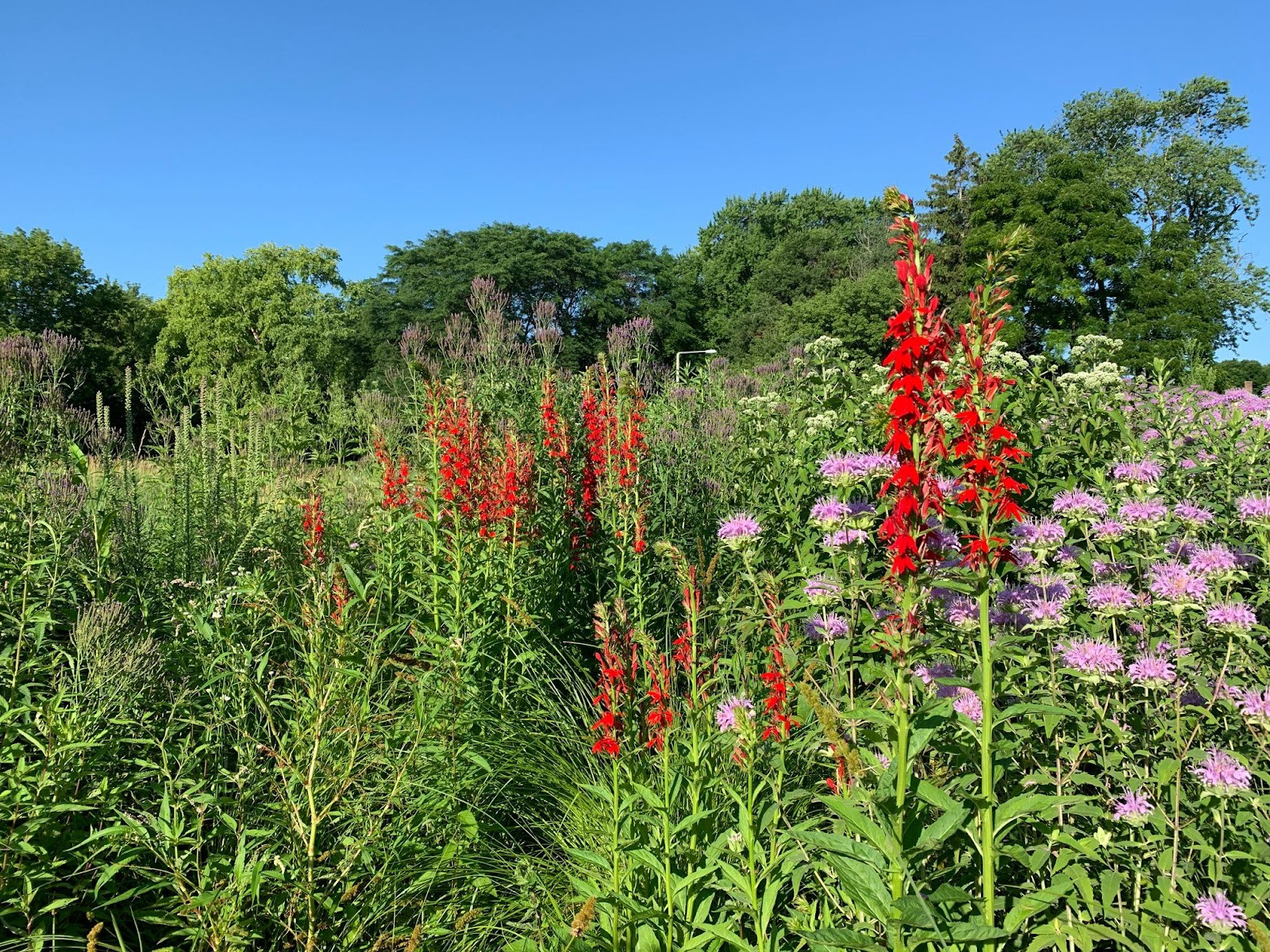
Lobelia cardinalis and bee balm | Photo courtesy of Dixon Greenway Madison
When asked what advice he would impart upon others interested in taking on a similar project, Pekar answered with a list:
1. Kill off existing vegetation as thoroughly as you can.
2. Spend time on the site just meandering and observing. There are surprises waiting out there that can help you learn.
3. Read books. There are so many terrific books on this topic now compared to 20 years ago. (I’ve been inspired by the likes of Doug Tallamy, Heather Holm, Piet Oudolf, Alan Branhagen, Roy Diblik and Thomas Rainier and Claudia West amongst others.)
4. Visit other areas. (I visit Olbrich Gardens and the UW-Arboretum here in Madison and the Lurie Garden in Chicago as often as I can.)
5. Don’t do it alone. More people is more fun and many hands are necessary!
6. Experiment. Seeing which plants thrive and attract wildlife is what makes it so fun.
7. Plant densely. If you don’t fill a space, weeds will.
Additionally, depending on property ownership details, Drake added, “Get buy-in from the institution managing the property. Take advantage of resources available from that institution. Solicit volunteers by every means available.”
As per usual, there is an area set to be planted this summer and plans mapped well into the future.
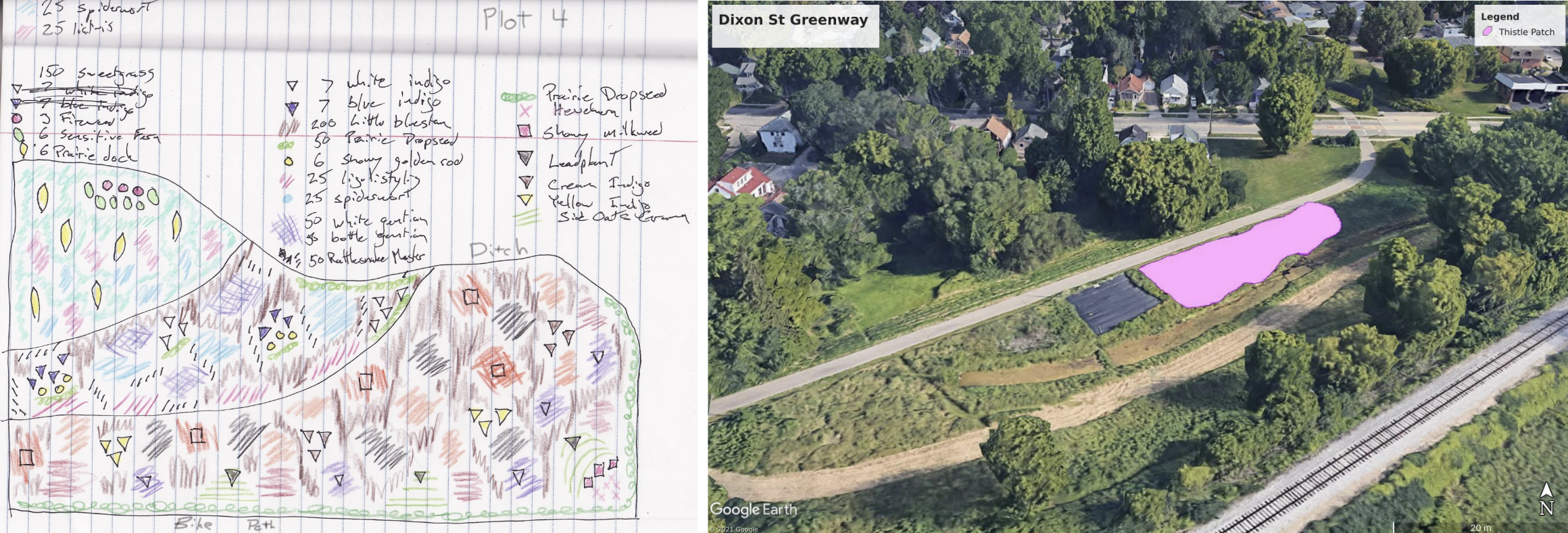
Planting plans; aerial view of view of future plots | Photo courtesy of Dixon Greenway Madison
For more information on the project, including specifics of native plant types that are utilized, which are too exhaustive to mention here, find them on Facebook at: facebook.com/DixonGreenwayMadison.
